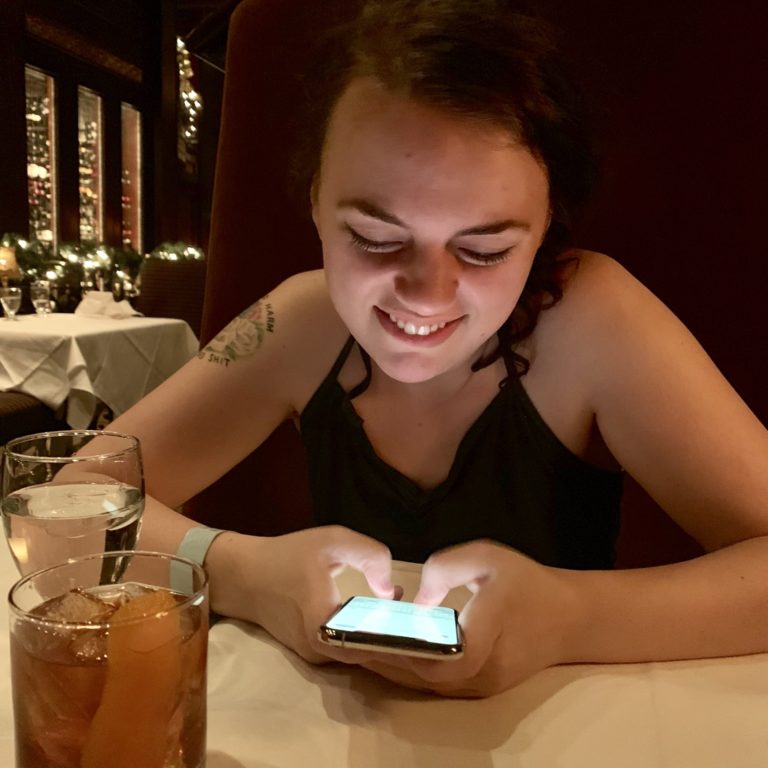
A month ago, I walked into an upscale sex shop in New York and saw that it was festooned in hearts, red lingerie, and Hershey Kisses. “OH GOD, NOT THIS AGAIN,” I shouted into the romantic void. How is it that I’ve been writing about sex and relationships professionally for nearly 8 years and Valentine’s always sneaks up on me?!
My beef with Valentine’s Day is mostly that it focuses on all the wrong things – showy, insubstantial displays of love, rather than the admirable daily work of keeping a relationship functional and fun – while making people feel terrible if they can’t afford exorbitantly priced roses/chocolates/dinner, or if they don’t have a partner to lavish attention on. I firmly believe love is worth celebrating, but some of the conventional ways of doing that have gotten awfully stale!
With that in mind, here are 25 ideas for Valentine’s activities you could do with your sweetheart that don’t make me yawn. These are intended for couples, but singles, please feel free to do ’em with a close friend or a fuckbuddy – or read my Valentine’s suggestions for the uncoupled. Now let’s get romantic!
Go see a comedy show. Forever one of my favorite date-night activities. Laughing together is good for your relationship and your neurochemistry! (If you’re in Toronto, my picks are Catch23 and Black & Funny; if you’re in New York, the Valentine’s edition of Tinder Live is a must-see.)
Watch a decidedly unromantic (or unconventionally romantic) movie. Perhaps at an actual movie theatre, if you can swing it. (If you’re in Toronto, the Revue Cinema is screening the 2001 slasher film Valentine as part of their Drunken Cinema series.) Here are some of my top picks: The F Word (known in some countries as What If), He’s Just Not That Into You, Her, Misery, Brokeback Mountain.
Outline your next creative collaboration. Is there anything hotter than working on a project with your brilliant partner?! Sit down and figure out if you’d like to collab on anything soon, whether it’s a tiny undertaking like devising a new dinner recipe or a massive hoopla like writing a book together.
Go dancing. Yes, even if you’re “bad at it.” Sweating together is oddly fun and bonding (I removed “exercise together” from this list in favor of something less preachy, but the point stands), and it can be surprisingly sexy to see the way your paramour moves on a dance floor – even if they’re charmingly awkward (or you are)!
Go to a strip club. Traditional vanilla/monogamous wisdom holds that you “shouldn’t” find other people sexy if you’re in a relationship – and while this type of traditionalism works for some people (I would imagine very few), IMO it’s fake news. Take your partner to the best strip club in town, tip generously, and make some mental notes about how you could best give your sweetheart a stellar striptease later in a more private environment…
Make each other’s gifts instead of buying them. I’m not a crafty person (and my songwriting habit isn’t an on-demand type of thing) so I’ve never been very good at this, but hey, you might. There’s something so romantic about creating a gift rather than choosing it off a shelf, whether it’s an embroidery of an inside joke you share, a hand-painted wooden figurine of their favorite animal, or a necklace assembled from crystals they think are pretty. (If you want to commission a queer trans artist to paint you and your beau, I highly recommend C. Murphy, who did this rad portrait of me and mine!)
Dine in. I don’t mean that as an oral sex joke, although… that too. Seriously, a homemade Valentine’s dinner would be so lovely, whether you make it together (you don’t truly know someone until they’ve been your sous-chef for a night) or the more cooking-inclined one of you throws something together while the other watches lovingly. Or does something actually useful like making drinks or setting the table.
Draw all over each other’s bodies. My friend Caitlin is very into this practice, and I once volunteered to get drawn on at a party she held. You might be surprised by how sensual it is to feel marker strokes feathering along your skin (or, if you’re a masochist like me, a sharp pen digging into you) – and certainly, it’s nice to be focused on like a work of art.
Do drugs together. Famously, there’s an OkCupid question from the early days of the site that asks, “Do you think drug use with your partner can be a romantic activity?” I was a firm No when I was straight-edge, but having eased into a more drug-accepting lifestyle, I now think it totally can be. Moving through altered states together can be a bonding ordeal, like climbing a mountain or running a marathon. It doesn’t much matter if it’s a drug you’ve done together lots of times or one neither of you have ever done – as long as you’re risk-aware and prepared for any potential mishaps, a shared trip could be a super sweet and intimate experience.
“Fuck first,” as Dan Savage often advises. Sex when you’re overstuffed (or overdrunk) from dinner is not always the most fun. Why not get it on before you leave for your romantic rendezvous? You can always fuck again later.
Talk about your goals and how you can help each other achieve them. Self-improvement power-couple alert! New Year’s is traditionally the time to talk about such things, but hey, collaborative goal-pursual is romantic, so why not discuss it now?
Devise a relationship check-in. This is a series of questions you can ask each other, in a formulaic way, once a week/month/whatever works, to determine which areas of your relationship are working and which need a tune-up. It can also simply help you become more present and aware of the things about your relationship that you’re grateful for. (Here are the questions me and my partner use.)
Take sexy pictures of each other. You don’t have to be a master photographer to capture your sweetie lookin’ fine; you will catch different aspects of them in your lens than most people would, just by virtue of being their partner. This would also be a great opportunity to pull out those mesh briefs/seamed stockings/”fuck-me” heels you’ve been hoarding!
Do karaoke, either at home (check YouTube or Spotify for tracks) or at a local bar that offers it. What a goofy good time.
Record a podcast together. You don’t even have to release it (although, if you do, Soundcloud is a good spot to host a one-off) – just sit down and record a conversation about your relationship, or a passionate interest you share, or the general idea of romance, or whatever. I always love having tangible records of earlier periods of my relationships and audio documentation can be particularly salient!
Go to an arcade or board games café. (There is no beating Snakes & Lattes here in Toronto, IMO.) Hell, maybe trouncing your nerdy love at Scrabble or Skee-Ball will inspire them to “punish” you later, in bed…!
Have a staycation. Book a hotel and read some travel guides for your city to find out which landmarks, restaurants, bars, and other miscellanea are most recommended for visitors. Love can make your mundane reality feel fresh again, and staycations can do that, too!
Make a Clone-a-Willy. I can’t think of much that’s more romantic than gifting your partner a fuckable facsimile of your genitals.
Spend time in silence together. You know, I used to believe that lapsing into long silences around your partner was a bad thing, because it meant you didn’t have anything to say to each other anymore – but it can be a nice thing, too, sometimes. Especially if you and your partner are both introverts and/or homebodies, maybe the best Valentine’s gift you can give each other is a quiet night at home, each separately reading or writing or crafting or meditating or whatever you want, together in your silent sovereignty.
Ask each other the “36 questions to fall in love” from Arthur Aron’s study. This list of questions was designed to foster intimacy between strangers, but you can learn a lot from going through it with an established partner as well.
Issue each other a day-long challenge. Can your girlfriend stay off Twitter all day if you remind her how unhappy it makes her (and keep her distracted with more fun activities)? Can your boyfriend stop complaining so much if that’s something he wants to stop? Can your enbyfriend write 3,000 words in a day, if you sit beside them sipping coffee and reading and offering moral support?
Play Truth or Dare. Yes, like teenagers at a suburban basement rager. It’s a classic for a reason! Here’s an online version if you need help coming up with prompts.
Do tarot readings for each other. Even if you think tarot is bullshit, this can be fun. The internet is chock full o’ sites that will tell you how to position cards in a reading and what each card means. You can pontificate on how you think the cards you pull are indeed relevant to your partner’s life – you probably know them best, after all!
Roleplay as a conventional vanilla couple. Oh, go ALL OUT, honey. Flowers. Chocolates. Restaurant reservations. Chaste pecks on the lips. Confessions of “I love you” and “You’re my soulmate” while having sex under the covers in the dark. Sometimes there is nothing more perverted than pretending you’re not perverted.
Read each other love poems. They don’t have to be Shakespearian sonnets. They can be raunchy, like this fave of mine by Richard Brautigan: “The sweet juices of your mouth / are like castles bathed in honey. / I’ve never had it done so gently before. / You have put a circle of castles / around my penis and you swirl them / like sunlight on the wings of birds.”
What are your favorite unconventionally romantic activities?



